A thematic semester on “Biodiversity and Evolution” recently ended at the Centre de Recherches Mathematiques in Montreal. It was packed with activities, drawing both mathematicians and biologists to a stimulating exchange of recent results, methodologies and open problems.
Continue reading
Author Archives: Guest Blogger
Since the late 19th century until today many important breakthroughs have been made in the research of haemostatic mechanism, leading to an excellent understanding of all of the related individual systems—the vascular system, blood cells, the coagulation pathways, and fibrinolysis. Continue reading
A workshop on “Celestial, Molecular, and Atomic Dynamics” (CEMAD-2013) was held at the University of Victoria, Canada, 29 July-2 August, 2013. The workshop was sponsored by the Pacific Institute for the Mathematical Sciences (PIMS) and the University of Victoria, and … Continue reading

The sustainable development and utilization of mineral resources and reserves is an area of critical importance to society given the fast growth and demand of new emerging economies and environmental and social concerns. Continue reading
 MPE 2013+, which extends MPE2013 into the future, is kicking off in January with a workshop, Mathematics of Planet Earth: Challenges and Opportunities – Introducing Participants to MPE 2013+ Topics, which will be held at Arizona State University January 7-10, 2014. The workshop aims to expose students and junior researchers to the challenges facing our planet, the role of the mathematical sciences in addressing those challenges, and the opportunities to get involved in the effort. Continue reading
MPE 2013+, which extends MPE2013 into the future, is kicking off in January with a workshop, Mathematics of Planet Earth: Challenges and Opportunities – Introducing Participants to MPE 2013+ Topics, which will be held at Arizona State University January 7-10, 2014. The workshop aims to expose students and junior researchers to the challenges facing our planet, the role of the mathematical sciences in addressing those challenges, and the opportunities to get involved in the effort. Continue reading
The atmosphere and ocean are central components of the climate system, where each of these components is affected by numerous significant factors through highly nonlinear relationships. It would be impossible to combine all of the important interactions into a single model. Therefore, determining the contribution of each factor, in both a quantitative and qualitative sense, is necessary for the development of a predictive model, not to mention a better understanding, of the climate system. Continue reading
Last Tuesday I had the pleasure of attending the Third Annual Mitacs Awards ceremony in Ottawa. These awards recognize the outstanding R&D innovation achievements of the interns supported by the various Mitacs programs—Accelerate, Elevate and Globalink. This year, I was particularly inspired by the story of the winner of the undergraduate award category. Continue reading
Mathematical and numerical modeling can be used to better understand the physics of earthquakes, improve the design of site-specific structures and facilities, and enhance seismic-risk maps. Continue reading
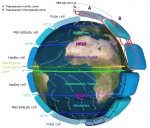 Internet advertisers and the National Security Agency are not the only ones dealing with the “data deluge” lately. Scientists, too, have access to unprecedented amounts of data, both historical and real-time data from around the world. Continue reading
Internet advertisers and the National Security Agency are not the only ones dealing with the “data deluge” lately. Scientists, too, have access to unprecedented amounts of data, both historical and real-time data from around the world. Continue reading

If you want to understand the planet Earth, then why not go back to the beginning of the Universe? The big bang is an event that we do not understand. It is thought to have happened about 13.75 billion years ago. What occurred, as we understand it, is mind blowing. Continue reading
 The AARMS-CRM workshop on Sustainability of Aquatic Ecosystem Networks was held at the Fredericton Inn in Fredericton, New Brunswick, Canada, from October 22-25. This workshop was the 10th in a series of 11 workshops in the pan-Canadian MPE thematic program on Models and Methods in Epidemiology, Ecology and Public Health. Continue reading
The AARMS-CRM workshop on Sustainability of Aquatic Ecosystem Networks was held at the Fredericton Inn in Fredericton, New Brunswick, Canada, from October 22-25. This workshop was the 10th in a series of 11 workshops in the pan-Canadian MPE thematic program on Models and Methods in Epidemiology, Ecology and Public Health. Continue reading
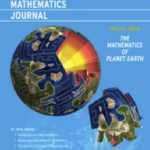
The November issue of “The College Mathematics Journal” is a special theme issue supporting the Mathematics of Planet Earth initiative, MPE 2013. Continue reading
Despite considerable research, earthquake dynamics remains one of the major challenges in geophysics. A recent workshop on Dynamics of Seismicity, Earthquake Clustering and Patterns in Fault Networks at SAMSI in Research Triangle Park, North Carolina, was organized to achieve progress in this field. Continue reading
 Do you know that over 50 satellites are launched every year to orbit the Earth? Have you ever wondered what the purpose of those satellites is? Here is one of them!
Do you know that over 50 satellites are launched every year to orbit the Earth? Have you ever wondered what the purpose of those satellites is? Here is one of them!
Continue reading
A group of mathematicians, biologists and hematologists from Romania is developing new mathematical models of leukemia, with the goal to help the medical community better understand the disease and develop adequate treatment routines. Since for a certain patient, the evolution of the disease strongly depends on the features of his/her disease (or on specific parameters – mathematically speaking), these treatment strategies should be adapted to the patient characteristics. Continue reading
During August 2013, the Fields Institute in Toronto hosted a Focus Program on Commodities, Energy and Environmental Finance. The Focus Program addressed the interaction of markets and environment, including such MPE themes as sustainable development, effective risk management of weather events, and the role of finance in the production and consumption of energy. Continue reading
In recent years, there have been great advances in mathematical and computational modeling of cardiovascular phenomena. The ultimate goal is to develop predictive mathematical tools that can be used in medical decision-making and treatment. Continue reading
A Berkeley graduate student, George Dantzig, was late for class. He scribbled down two problems from the blackboard and handed in solutions a few days later. But the problems on the board were not homework assignments; they were two famous unsolved problems in statistics. The solutions earned Dantzig his PhD. Continue reading
What is the relationship between temperature measurements and greenhouse gas emissions, and what do these relationships tell us about the sensitivity of climate to increased greenhouse gas concentrations? How can historical temperature measurements inform this understanding? Continue reading

Another mathematical modeling success is highlighted in a September 23, 2013, Science News story that describes the evolution of ancient complex societies. One interesting fact reported is that intense warfare is the evolutionary driver of complex societies. Continue reading

As society increasingly benefits from the various types and uses of imaging, there is a growing need to integrate imaging data across modalities and to develop new imaging techniques. Not surprisingly, the mathematical sciences—mathematics, statistics, and computational science—all play a role in this growing area. Continue reading

On September 24, 2013, I had the pleasure of attending the seventh in the nine-lecture
MPE2013 Simons Public Lecture Series. The talk was held on the beautiful
campus of Brown University in Providence, and was attended by nearly 600
people, including entire bus-loads of high school students. Continue reading
The field of celestial mechanics is an old one, going back to 90 AD when Claudius Ptolemy sought to describe the motions of the planets. However, the modern field of celestial mechanics goes back to the 1700s when Joseph-Louis Lagrange … Continue reading
I recently had the opportunity to lecture on “Aquaculture and Sustainability of Coastal Ecosystems” at the NSF-funded Mathematical Biosciences Institute (MBI) in Columbus, Ohio. The MBI focuses on different theme programs; in the fall of 2013 the theme program is … Continue reading
In a previous post, Kaitlin gave a great overview of the recent ICMS Tipping Points workshop. Today we will continue that conversation with a detailed look at efforts to understand and detect early warning signs of tipping. Continue reading
Thanks to the affordability of air travel nowadays, an increasing number of us have the opportunity to visit exotic locations around the globe. Continue reading

Interested in the role of mathematics in predicting the weather or how bacteria adapt or designing aircraft? Continue reading
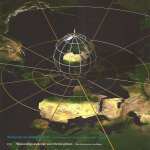
What is a wave attractor? How can we “see” below the Earth’s surface while staying above ground? And what does desertification have to do with balloons? These and other topics are discussed in the September 2013 issue of the Nieuw Archief voor Wiskunde (NAW, translated as “New Archive for Mathematics”), the quarterly journal of the Royal Mathematical Society of the Netherlands. The NAW is aimed at a broad audience: anyone professionally involved in mathematics, whether as an academic or industrial researcher, student, teacher, journalist or decision maker. Continue reading
This past week, the International Centre for Mathematical Sciences (ICMS) hosted a workshop in Edinburgh, United Kingdom. The workshop brought together an international group of mathematicians, statisticians, climate scientists, and ecologists to address the topic of tipping points. Continue reading
At the end of August, Nature Climate Change published an interesting paper showing that current global climate models tend to significantly overestimate the warming observed in the last two decades. A few months earlier, Science published a paper showing that four top-level global climate models, when run on a planet with no orography and entirely covered with water (an “aqua-planet”), produce cloud and precipitation patterns which are dramatically different from one model to another. Continue reading
On March 18, 1999, a small aircraft crashed near St. Louis, and the ensuing FAA investigation concluded that the crash was caused by wake turbulence from a helicopter that had just landed ahead of the plane. Continue reading
The health of the world’s oceans has been in the news a lot over the last few months. Recent reports suggest that the oceans are absorbing carbon dioxide at unprecedented rates. The ocean is the dominant player in the global carbon cycle, and the sequestering of more carbon dioxide, a major greenhouse gas, sounds like a good thing. However, researchers have measured significant increases in ocean acidity, and they worry this will have a negative impact on marine life, especially phytoplankton. Continue reading
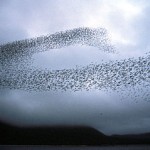
Observing collective phenomena such as the movement of a flock of birds, a school of fish, or a migrating population of ungulates is a source of fascination because of the mystery behind the spontaneous formation of the aggregating behavior and the apparent cohesiveness of the movements. However, they can also be the cause of a major environmental and social problem when one thinks, for example, of the flight of a swarm of voracious locusts ravaging crops in various parts of the world and putting many communities under severe stress. Continue reading
Here we consider the optimal control theory of infinite dimensional systems that has recently found interesting applications in theoretical economics so that economic models can be made more realistic. Continue reading

While I am a pure mathematician working in dynamical systems, I have always been fascinated by the mathematics of the N-body problem and its applications to celestial mechanics in general, and to the Solar system in particular. Continue reading
In June 2012, more than 3,000 daily maximum temperature records were broken or tied in the United States, according to the National Climatic Data Center (NCDC) of the US National Oceanic and Atmospheric Administration (NOAA). Meteorologists commented at that time that this number was very unusual. By comparison, in June 2013, only about 1,200 such records were broken or tied. Was that number “normal”? Continue reading
A recurrent idea in science is that the loss of stability of an equilibrium position through diffusion can lead to the creation of patterns. The idea goes back to Turing in his famous 1952 paper “On the chemical basis of morphogenesis,” which proposes a model for morphogenesis through chemical reaction-diffusion. Continue reading
What do bats and oil companies have in common? Both use active sensing methods (echolocation) in pursuit of their objectives—dinner or oil reserves. Recently, the method of Gaussian beams has become a promising alternative for asymptotic solutions to the wave equations in place of the traditional methods based on geometric optics for finding approximate short-time solutions. Continue reading
When asked to give an invited lecture at the first ever Mathematical Congress of the Americas, I jumped at the chance. This would be an opportunity to meet new colleagues from the Americas and to share my interest in mathematical ecology. Continue reading
In support of worldwide MPE2013 efforts, NSF’s Mathematical Biosciences Institute (MBI) at Ohio State University is hosting three autumn workshops aimed at the interface of mathematics and the science of sustainability. Continue reading
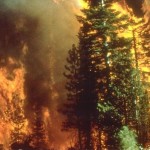
“It’s fire season in the forests and wildlands of America.” So began an article by Barry Cipra (“Fighting Fire with Data’). I recalled this article after hearing about the tragic events in the forest fires in Arizona earlier this week, Continue reading

Mathematics analyzes numerous aspects of financial markets and financial instruments. For the markets trading CO2 emissions, mathematics is used to decide how cap and trade rules will operate. Continue reading
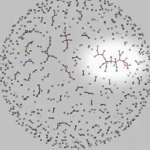
The AIM workshop on exponential random network models was an experiment, bringing together people in applied social sciences, biologists, statisticians, and mathematicians who are interested in the emerging field of graph limit theory. Continue reading
No matter how surprising, outlandish, or even impossible it may seem, one of the next challenges of modern applied mathematics is the modeling of human behaviors. Continue reading
Is the Earth’s orbit stable? Will the Moon always point the same face to our planet? Will some asteroid collide with the Earth? Continue reading
The use of computational methods to explore complex social and cultural phenomena is growing ever more common. Continue reading
Vegetation patterns are a mysterious phenomenon that we can think about in the same way as patterns that form in many other contexts. What’s more, they may have importance that transcends their beauty. Continue reading
What exactly is the definition of the “social cost of carbon” (SCC)? Who is interested in determining this quantity? Who is interested in its value? Can this even be done and, if so, how accurately? Continue reading

As a large crowd gathered at CRM on Friday evening, May 10, to hear Paul Embrechts, Professor of Mathematics at the Swiss Federal Institute of Technology in Zürich (ETHZ), everyone was wondering how he would connect “Königsberg’s bridges, Holland’s dikes, and Wall Street’s downfall.” Continue reading
Today’s blog is a short blog about a “Blog on Math Blogs.” Continue reading
The National Museum of Natural History and Science of the University of Lisbon, Portugal, has added several new and significant displays to the exhibition “Forms and Formulas” in the framework of the Portuguese activities for MPE2013. Highlight is the winning entry of the MPE2013 competition, “The Sphere of the Earth,” an interactive module created by Daniel Ramos (Spain). Continue reading
Martina Morris, a Professor of Sociology and Statistics at the University of Washington, studies the transmission of sexually transmitted diseases like HIV using network analysis. Continue reading

UCLA Professor Andrea Bertozzi is applying the powerful tools of mathematics and big data analysis for mapping crime patterns – with implications for crime prevention. Continue reading
Two recent articles, written for a general audience, provide examples from the applied mathematics literature that show how mathematics is used to model and understand the progression and propagation of certain kinds of infections. Continue reading
The workshop “Mathematical Models and Methods for Planet Earth,” organized by the Italian National Institute for Advanced Mathematics (INdAM) under the auspices of MPE2013 in Rome, May 27-29, finished a few days ago. Continue reading
The Pacific Institute for the Mathematical Sciences (PIMS) is organizing a Mathematical Biology Summer School at the University of Alberta in Edmonton, Canada, May 27-June 14, 2013, on “The Mathematics Behind Biological Invasions.”
Continue reading
In recent years, governments around the world have experimented with many different policy tools to encourage the growth of renewable energy. Continue reading
The Italian National Institute of Advanced Mathematics (INdAM) is organizing a Workshop “Mathematical models and methods for Planet Earth” in Rome, Italy, on May 27-29, 2013. Continue reading
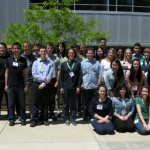
During the week of May 13, 2013, thirty-four students from around the United States attended the Statistical and Mathematical Sciences Institute (SAMSI) Undergraduate Modeling Workshop. Continue reading
In coastal ocean, estuary, and lake systems, there is much interest in understanding, detecting, and predicting biological events. Continue reading
“Neglected Tropical Diseases” isn’t just a generic title for all the forgotten diseases in the world; it’s a specific designation on behalf of the World Health Organization for 13 particular diseases that qualify for neglected status. Collectively, these diseases infect about one sixth of the world’s population. Continue reading
This week at AIM features a MPE related workshop concerned with boundary-value problems for nonlinear dispersive evolution equations and systems. The workshop has participants with diverse interests in both the pure and applied aspects of such problems. Continue reading
There is widespread interest in finding and designing spacecraft trajectories to the Moon, Mars, other planets, or other celestial bodies (comets, asteroids), which require as little fuel as possible. Continue reading
Pressure is an important property of fluid flow, and it is known that the pressure changes continuously in the fluid domain. In the coupling of flows of different nature, however, the situation can be more complicated and discontinuities may appear in the pressure field. Continue reading

I recently had the opportunity to travel to the Antarctic peninsula on board the National Geographic Explorer. We departed out of Ushuaia, Argentina, crossed the Drake Passage and spent the better part of a week exploring the northwestern side of the Antarctic peninsula from the South Shetland Islands to just inside the Antarctic Circle in Crystal Sound. Continue reading
Brinicles are fun things to think about, but they also have broader implications. On one hand, as heat flows through them, they contribute to the energy balance in the ice pack around Antarctica. On the other hand, brinicles may have played a role in the beginnings of life on the early Earth. Continue reading
Today’s blog is an update on a story that was in the news earlier and also some comments on a recent article in the New York Review of Books. (See the blog of 4.11.2013.)
Continue reading
How fast does water flow through sand or soil? Maybe not so fast, but everyone has seen water soak into beach sand and garden soils. Most people have also noticed a concrete sidewalk soaking up a little water as rain begins to come down. But how fast does water flow through a rock? Continue reading
How precarious is the existence of the Monarch butterfly? Does personal diet affect the environment? What are the consequences of increased human life expectancy? Continue reading

Our team had begun our initial work on what we call the “berry problem”, and I was able to describe our efforts to help stakeholders in the Pajaro Valley region in California balance water needs among competing interests. Continue reading
Most buildings more than 20 years old are energy “hogs.” They take a lot of energy to heat in the winter, and they take a lot of energy to cool in the summer. The benefits of saving energy in buildings are enormous. Continue reading
Hydrogen fuel cells are of interest as an alternative energy technology. They are electrochemical systems that combine hydrogen and oxygen (from air) to produce electrical energy. They have potential for use in many applications, including automotive, stationary power and small-scale power for mobile electronics. Continue reading
This week (April 14-20) is National Environmental Education Week. Monday April 22 is Earth Day! On that day, the U.S. Department of Education will announce the winners of the second annual Green Ribbon School awards. Continue reading

In January of 2011, AIM held a Sustainability Problems workshop, with the goal of bringing together mathematicians and industry representatives to work on a variety of sustainability problems, including renewable energy, air quality, water management, and other environmental issues. Continue reading
An exciting aspect of the relationship between mathematics and biology is the potential — the expectation even — that biology will provide the impetus for new mathematics, and that the feedback loop between mathematics and biology will be at least as influential and exciting as the one mathematics and physics has enjoyed for over 2000 years.
Continue reading
It was unusually warm and windy for early April. We piled into the toasty lecture hall with drinks and sandwich wraps in hand. Dr. Smith, with his shock of white hair and the thin frame of a marathon runner, shed his sport jacket as he recounted the 2003 European heat wave. Continue reading
Mathematical modeling and data analysis play a critical role in the mathematics of Planet Earth. Continue reading
The Next Generation Science Standards have just been released. They propose that climate change be an integral part of science education starting already in middle school. Continue reading
Last Friday, the Wall Street Journal published an essay by E.O. Wilson that has since generated much discussion from readers (229 comments to date) on the WSJ website and also among mathematicians. Continue reading
A lake that used to be clear, with a rich vegetation and a diverse aquatic life, suddenly becomes turbid, with much less vegetation and only bottom dwelling fish remaining. It turns out that the change comes from increased nutrient loading, but when the runoff leading to the nutrient inflow is reduced, the lake doesn’t become clear again – it remains murky. Continue reading

Please join us at the World Conference on Natural Resource Modeling. This annual meeting is run by the Resource Modeling Association. In June 2013, the conference will be held at Cornell University. Continue reading
Last week I attended “MECC 2013” – the International Conference and Advanced School Planet Earth, Mathematics of Energy and Climate Change, Portugal, 21-28 March 2013. Continue reading
Mathematical models can be used to study the spread of technological innovations among individuals connected to each other by a network of peer-to-peer influences, such as in a physical community or neighborhood. Continue reading
As the energy needs are expected to surpass the energy content found in available fossil-fuel resources in this century, interest in renewable energy sources has increased in the past decade. One area of interest is in geothermal energy harvesting. Continue reading
April is Mathematics Awareness Month (MAM). This year’s theme is Mathematics of Sustainability, which explores how mathematics helps us better understand these complex questions. Continue reading

A distinguished panel of experts, gathered by the National Academies, has recently produced a very interesting and informative publication: Fueling Innovation and Discovery: The Mathematical Sciences in the 21st Century. This publication was released by the National Academies in advance of their report The Mathematical Sciences in 2025, developed with support from the National Science Foundation. Continue reading
This morning I heard a lecture by Rick Anthes, president emeritus of UCAR, former director of NCAR. His talk was entitled “Butterflies and Demons,” and the subject was predictability of weather and climate. He was a witness to, and participant in the development of numerical weather prediction in the form it exists today at weather centers worldwide. It was a particularly interesting and provocative talk.
Continue reading
Last Saturday, at the Association for Women in Mathematics (AWM) Research Symposium at Santa Clara University, Inez Fung gave a wonderful spirited lecture on “Climate Math.” Continue reading
For the past nine weeks, I had the privilege to teach a Massive Open Online Course(MOOC) on image and video processing. Continue reading
This month marks the 50th anniversary of the 1963 publication of Ed Lorenz’s groundbreaking paper, “Deterministic Nonperiodic Flow,” in the Journal of Atmospheric Science. This seminal work, now cited more than 11,000 times, inspired a generation of mathematicians and physicists to embrace the nonlinearity governing our complex world. Continue reading
It took approximately 40 years for the community of mathematicians to become aware of the various difficulties facing human society in the near future and to accept to work on these questions. Continue reading
One of the most famous images in Japanese art is the Great Wave off Kanagawa, a woodblock print by the Japanese artist Hokusai. The print is also famous in mathematics: the structure of the breaking wave at its crest illustrates features of self-similarity, and the large amplitude of the wave has led it to be interpreted as a rogue wave generated from nonlinear wave effects. Continue reading
While the European launch of MPE2013 was taking place at the UNESCO Headquarters in Paris, a youth festival was taking place in Lisbon at “Pavilhão do Conhecimento,” the largest science center in Portugal, with hundred of pupils participating in mathematics popularization activities directly or indirectly related to the mathematics of planet earth for schools. Continue reading
March 11 marks the second anniversary of the 2011 9.0 earthquake with epicenter located off the coast of Japan, which caught the world—including expert seismologists—by surprise. It was a stark reminder of how much is still unknown about faults and their sudden, catastrophic, behavior. Continue reading
Sub-Sahara Africa is the epicenter for both the HIV epidemic and poverty. Continue reading
 San Francisco - Palace of Fine Arts
San Francisco - Palace of Fine Arts
On Monday, March 4, Emily Shuckburgh delivered the second of the MPE2013-Simons Public Lecture Series talk, “Climate disruption: what math and science have to say” at the Palace of Fine Arts in San Francisco. Continue reading

On March 5, at 9:00 am, the first visitors started to explore the 20 modules of the first MPE exhibition at the UNESCO Headquarters in Paris. Continue reading
Twenty-nine entries were submitted for the competition for modules for a virtual exhibition Continue reading

Though waves of one sort or another are a ubiquitous part of our daily experience, we have to get on with our lives, and therefore tend not to think of the wavelike nature of daily phenomena. Those fortunate among us who can escape to the shore on a hot August week can then take the time to observe the sea and the waves she sends us. Continue reading
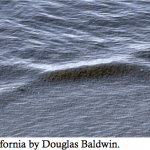 Long stem X-type interactions with taller stem height
Long stem X-type interactions with taller stem height
This past week at AIM Mark Ablowitz told me about an interesting article (with beautiful pictures) he wrote with Douglas Baldwin called “Nonlinear shallow ocean-wave silicon interactions on flat beaches.” The propagation of these waves may contribute to the growth of tsunami waves. Continue reading
A small research group has been meeting at the American Institute of Mathematics (AIM) in Palo Alto, CA, during the week of Feb. 18-22 to work on integrable systems of nonlinear Schroedinger type, a special class of nonlinear partial differential equations (PDEs). Continue reading
One of the reasons for designating 2013 as the year of “Mathematics of Planet Earth” is to showcase the work done by mathematics in application areas like climate, ocean, and earth sciences. The SIAM Conference on CS&E, which begins on February 25th, contains many sessions relevant to MPE 2013. Continue reading
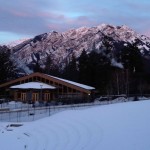
I was planning to send an update every day from the data assimilation workshop at the Banff Center, but I’ve been so busy here that by the time I get back to my room I’m ready to collapse. The Banff Center is the best place I know of for a workshop. It’s almost like working hard and being on vacation at the same time, with the benefits of both. Continue reading

I was planning to send an update every day from the data assimilation workshop at the Banff Center, but I’ve been so busy here that by the time I get back to my room I’m ready to collapse. The Banff Center is the best place I know of for a workshop. It’s almost like working hard and being on vacation at the same time, with the benefits of both. Continue reading
The close approach of the asteroid that we have all read about in the newspapers represents something of a coincidence for me as I prepare for the data assimilation workshop in Banff this coming week. Continue reading
“Science without data is science-fiction.” This was on of the boldest (if more facetious…) statements heard at the workshop “Models and Methods in Ecology and Epidemiology (M2E2)” held at CRM last week. Speakers from very diverse backgrounds presented a wide rage of mathematical models developed to better understand the dynamics and propagation mechanisms of, amongst others, Avian Flu, Lyme Disease and the West Nile virus. Throughout the presentations, the pervasive role played by data incorporation in the models was emphasized, and the equally important organization of model development as a team effort was underlined. Continue reading
You would be forgiven for not initially recognizing some of the high-level similarities between the practice of research in sciences such as physics and research in ornithology. One basic similarity is that we are all constrained in what we can measure. Quantum physics has its uncertainty principle that describes limits on what can be measured. Ornithologists are at times limited in what they can measure by the very things that they are trying to observe: birds will sometimes actively avoid detection. Continue reading
One hears occasionally in the popular media that one possible consequence of global warming might be the disappearance of the Gulf Stream. This makes physical oceanographers cringe. The Gulf Stream and its analogs in other ocean basins exist for fundamental physical reasons. Climate change may well bring changes in the Gulf Stream. It may not be in the same place, may not be of the same strength or have the same temperature and salinity characteristics, but as long as the continents bound the great ocean basins, the sun shines, the earth turns toward the east and the wind blows in response, there will be a Gulf Stream. Continue reading
A scientific workshop, as part of the pan-Canadian MPE2013 thematic program “Models and Methods in Ecology, Epidemiology and Public Health (M2E2)”, started at CRM today. The workshop, focusing on models and methods in ecology and epidemiology, was designed to initiate … Continue reading
I have been involved with MPE2013 activities since the first organizing workshop was held at AIM in March of 2011, not as a mathematician with MPE areas of interest, but more as an institute staff member helping to bring about … Continue reading
It is increasingly clear that we are initiating a sequence of dramatic events across our planet. They include habitat loss, an increased rate of extinction, global warming, the melting of ice caps and permafrost, an increase in extreme weather events, … Continue reading
Prepared by Ali Nadim (Claremont Graduate University) and Ami Radunskaya (Pomona College) What do green buildings, environmental toxins, sources of ozone pollution in the atmosphere, and infrastructure planning for electrical power have in common? They were all topics of intense … Continue reading
A workshop is taking place this week at the American Institute of Mathematics (AIM) in Palo Alto, California, on “Stochastics in Geophysical Fluid Dynamics: Mathematical foundations and physical underpinnings.” This workshop is co-organized by Nathan Glatt-Holtz (Institute of Mathematics and … Continue reading

A book review in the January 11 issue of Science magazine begins with a wonderful line: “It is not often that mathematical theory is tested with a machine gun.” The book under review is “How Species Interact: Altering the Standard … Continue reading
I have wanted to run this story down since I saw the reference in Lamb’s Hydrodynamics to a paper by G. I. Taylor that contains a description of what oceanic and atmospheric scientists call “Ekman layers.” Physical oceanographers learn early … Continue reading
This session, organized by Thomas Bellsky, Arizona State University, and Lewis Mitchell, University of Vermont, focused on applications of data assimilation to climate issues. It opened with a talk by Chris Jones of the University of North Carolina at Chapel … Continue reading

In concert with the MPE 2013 initiative, the NSF’s Mathematical Biosciences Institute (MBI) at Ohio State will host the Keyfitz Centennial Symposium on Mathematical Demography in June 2013, cosponsored by the OSU Institute for Population Research (IPR). The main goal … Continue reading
I am attending the Joint Mathematics Meetings in San Diego, where I was convinced to help organize a special session on environmental mathematics focused on evaluating past climate changes and modeling of future variations. I am a meteorologist by training … Continue reading
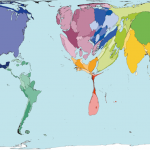 Carbon dioxide released into the atmosphere, by country
Carbon dioxide released into the atmosphere, by country
I was thrilled to get your last letter. I’m glad to see you are looking at some of the references I sent you last time. Figuring out who is responsible for higher atmospheric levels and how to respond to climate … Continue reading
In January I am normally in a southern US city attending the American Meteorological Society annual meeting. This week, I am in San Diego attending a different AMS – the American Mathematical Society Joint Mathematics Meetings. I am helping to … Continue reading
 How much salt in your climate pancakes?
How much salt in your climate pancakes?
Doing your school research paper on climate change sounds like a great idea! Let me see if I can get you started. I’ll even put a few references at the end in case you want to look those up for … Continue reading
It is often the case that at the end of one of my talks about some aspect of climate research or about the development of tools for the analysis of climate I get asked questions regarding global warming. Whether global … Continue reading
As part of the United States launch of MPE2013, pedagogical talks on Integrating the Mathematics of Planet Earth 2013 in the College Mathematics Curriculum will be presented next week during the Joint Mathematical Meetings, the world’s largest annual mathematics conference in San Diego, California. Continue reading
As we enter the new year, SIAM — along with more than one hundred universities, research institutes, and other scientific organizations —is thrilled to be a part of Mathematics of Planet Earth 2013. It is an exciting year-long program dedicated … Continue reading
The Professional Science Master’s Programs (PSM), a new breed of graduate programs, have emerged in the last decade and a half as a response to the workforce need for STEM professionals with strong scientific and professional skills. Continue reading
The Guinea Worm Disease, which already affected 50 million people, is almost eradicated with fewer than 2000 cases. What happened? Mathematical modeling helps identifying the most relevant parameter and design a strategy of action. Continue reading